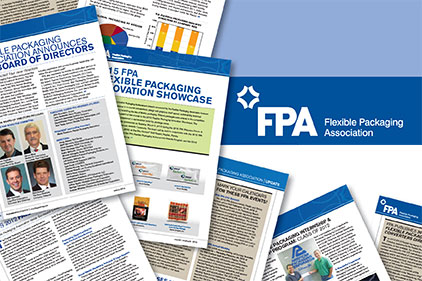Flexible Packaging Association | Update
FPA Energy Bag Program Announces Results

The “Energy Bag,” Plastics-to-Energy pilot program demonstrated that there are emerging technologies that can offer solutions for diverting most multi-material flexible plastic packaging and many other types of plastics that are difficult to mechanically recycle.
In 2014, a coalition of partners including The Dow Chemical Company, Republic Services, the Flexible Packaging Association, Agilyx, Reynolds Consumer Products, and the City of Citrus Heights, California, collaborated to implement a first-of-its-kind pilot in the United States. The Energy Bag Pilot tested the feasibility of collecting household non-recycled plastics (NRP) at curb side, sorting the NRP at a material recycling facility (MRF), delivering the desired/sorted NRP to an energy conversion facility, and effectively converting that NRP into an energy resource—all via an existing waste management infrastructure.
FPA co-produced a final report and video which contain findings from the resource recovery research produced by FPA. A video describing the Energy Bag program and all research on resource recovery can be viewed and downloaded from www.flexpack.org
Key findings from the report are:
• Approximately one-third of the targeted Citrus Heights, California households participated during the three-month pilot, resulting in 8,000 Energy Bags collected totaling approximately three tons of material.
• The majority of participants followed the provided instructions well, resulting in contamination rates of 16.5%, comparable to a typical recycling collection cycle.
• The provided instructions asked that the Energy Bags be placed inside the recycling bin, which was effective and not disruptive to the “haulers’ collection routines.
• The Energy Bags were successfully pulled during the manually pre-sorted phase. No Energy Bags were found wrapped in the paper screens. The recycling facility management indicated that the pilot ran seamlessly.
• Typical maximum oil conversion efficiencies for pyrolysis are 70-80%. The non-recycled plastics collected were suitable for pyrolysis and tested at 58% oil conversion efficiency. The Energy Bag Pilot resulted in a conversion of 512 gallons of synthetic fuel oil.
Next Steps
Another pilot program is being planned to validate the findings and assumptions of the Citrus Heights, California Pilot. The next pilot will include a broader collaboration with brand owners, packaging converters, and industry associations with broad knowledge of plastics, sustainability topics, and consumer marketing.
Looking for a reprint of this article?
From high-res PDFs to custom plaques, order your copy today!







